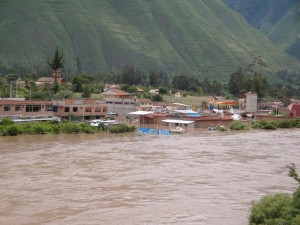Down the Amazon, no direction home
 The recent news that ex British Army captain Ed Stafford has completed his 859 day walk along the Amazon from its source to the sea deserves comment – and praise. It’s an epic achievement and one never achieved before. Previous attempts have always been made partly by boat, and for good reason: some areas of the Amazon, like the Solimoes in Brazil, flood for hundreds of kilometers each year and there are no roads along the main river, so to walk the entire length is daunting.
The recent news that ex British Army captain Ed Stafford has completed his 859 day walk along the Amazon from its source to the sea deserves comment – and praise. It’s an epic achievement and one never achieved before. Previous attempts have always been made partly by boat, and for good reason: some areas of the Amazon, like the Solimoes in Brazil, flood for hundreds of kilometers each year and there are no roads along the main river, so to walk the entire length is daunting.
I also like his candour. He told the wire-press agency AP that he was “no eco-warrior” and that while, like all of us, he deplored the destruction of the Amazon rain forest, his own expedition was at its heart simply a grand expedition of endurance: “The crux of it is, if this wasn’t a selfish, boy’s-own adventure, I don’t think it would have worked. I am simply doing it because no-one has done it before.”
In these days when every expedition has to have its ‘eco-message’ , however admirable (like the Plastiki, which has just sailed the Pacific on a raft made from recycled plastic bottles that unfortunately proved very difficult to stop drifting sideways), I find this quite refreshing. The elemental urge ‘to be the first to do something’ has always been an immensely productive one. …
Down the Amazon, no direction home Read More »


 He was describing his recent work at a site called Huaca el Pueblo, where they uncovered a tomb dating from around 300 to 500 AD. Inside were the remains of four individuals, two men and two women, all in their twenties at the time of death. Working at frantic speed over the space of five weeks to beat the threat from both the humidity and local looters, his team of archaeologists injected alcohol under the mask of ‘the highest status individual’ – who Bourget has called ‘the Lord of Ucupe’ – to loosen it up for removal from his face in the normal way. They then used thin slivers of bamboo to lift it, only to discover another mask underneath, like a Russian doll.
He was describing his recent work at a site called Huaca el Pueblo, where they uncovered a tomb dating from around 300 to 500 AD. Inside were the remains of four individuals, two men and two women, all in their twenties at the time of death. Working at frantic speed over the space of five weeks to beat the threat from both the humidity and local looters, his team of archaeologists injected alcohol under the mask of ‘the highest status individual’ – who Bourget has called ‘the Lord of Ucupe’ – to loosen it up for removal from his face in the normal way. They then used thin slivers of bamboo to lift it, only to discover another mask underneath, like a Russian doll.